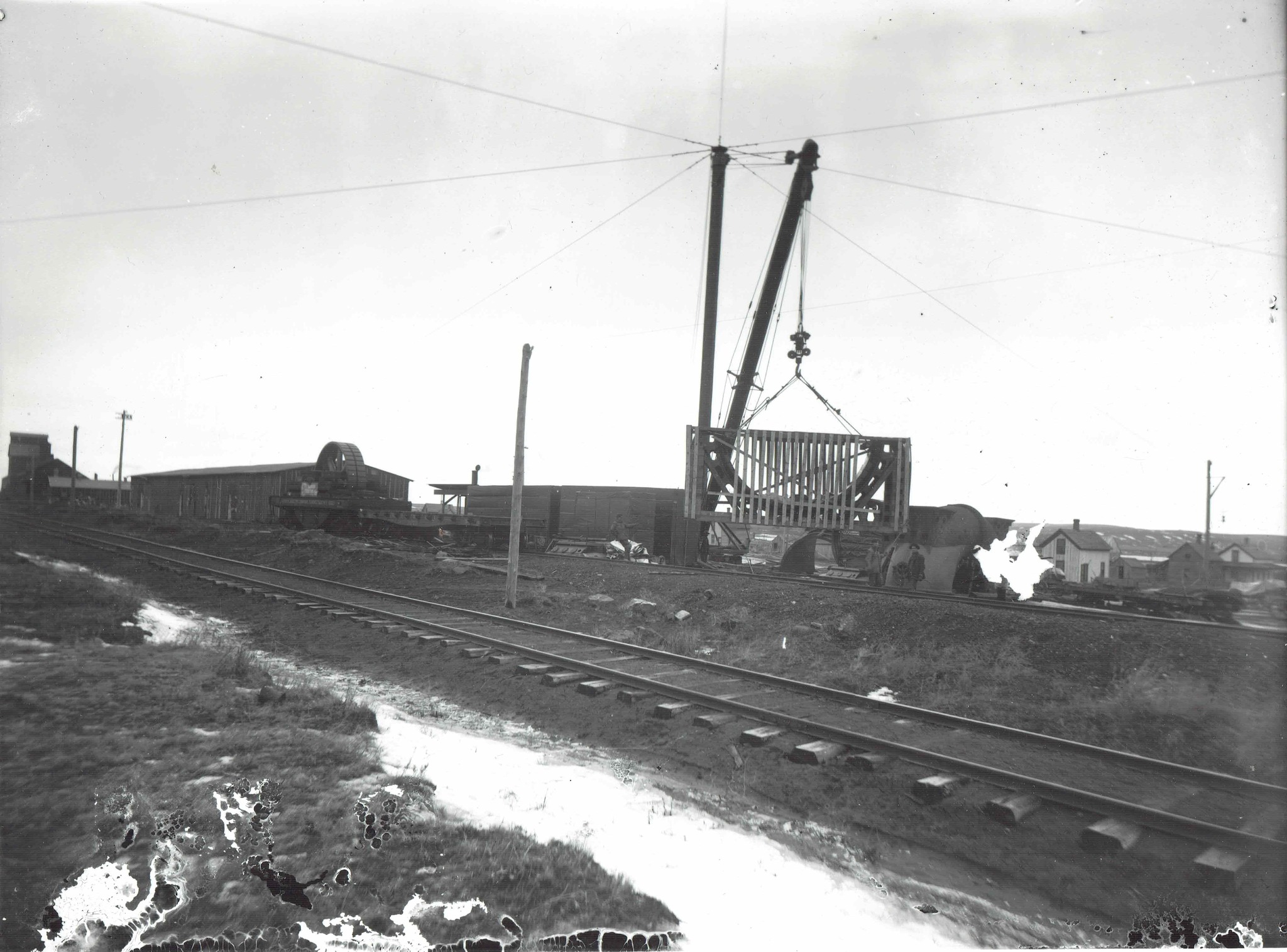Guest post by Kirk Carlson.
Washington Water Power Co (now Avista) built Little Falls Dam between 1907 and 1910. Every part of the dam was shipped to Reardan and then carted by wagon to Little Falls. This includes the cement, turbines, penstocks, generators, transformers, and wiring. The dam had four turbines which each weighed 750 tons. These were the largest in the world at the time. They probably had a source for sand and gravel nearby so they could mix the concrete on site, but they still had to transport the cement and keep it dry until it was mixed. WWP had a railroad siding in Reardan with a bunk house, livery stable, blacksmith shop, and cement storage warehouse. This side was on the east side of town away from the grain elevators.
One of the photos shows the derrick used to transfer the loads from a railroad car to a wagon. The derrick is supported by cables strung high to allow wagons and trains to pass underneath. The center portion of the derrick is able to pivot somehow. The lifting power is provided by a steam powered donkey (steam engine) in the little building beside the derrick.
Some of the wagons were huge and heavy duty. No wooden farm wagons here. The heavy duty wagon in the photo is pulled by a steam engine.
The 1911 atlas shows a road going through Spring Creek canyon. It is doubtful that this is the route taken by the wagons as road building equipment was still fairly primitive. It is more likely that they hauled their loads down the Crescent grade to the Long Lake bench and then down the remaining grade in the Spokane River canyon to Little Falls.
Map: 1909 Sanborn Insurance Map from the Library of Congress. Unloading photo was from a miscellaneous collection held by the Reardan Memorial Library. The photos of a dam part in transit are from the Clayton photo collection held by the Reardan Memorial Library.




No comments:
Post a Comment